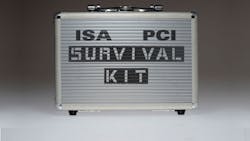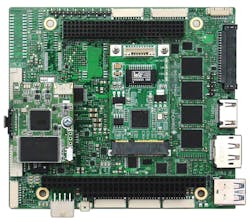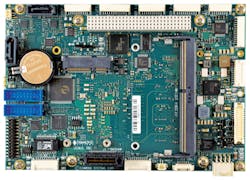How long does old tech need to survive? It might be half an hour in the consumer space, but on the embedded side it is measured in multiple decades, and in the form of interfaces like serial ports and RS-232.
The Industry Standard Architecture (ISA) Peripheral Component Interconnect (PCI), and Versa Module Europa (VME) are the parallel buses that once dominated the embedded and PC space. But these days PCI’s successor, PCI Express (PCIe), runs faster and uses fewer circuit board traces because of its serial nature. Even Ethernet has joined PCIe on some backplanes.
Form factors like PC/104 have been utilizing multiple interfaces like Diamond System’s Aries PC/104-Plus (Fig. 1) with an Intel E3800 Atom that supports PCI Express. Compare this to the latest Diamond System’s Venus (Fig. 2) that has a PCI, two Mini-PCIes, and OneBank Plus sockets. Two of the three interfaces use PCIe. FPGAs or bridge chips are needed to handle interfaces like PCI and ISA when the processor only provides PCIe. Chip availability has become an issue for these parallel platforms, even as they continue to thrive because of the long-term nature of embedded systems.
1. Diamond System’s Plus uses an Intel E3800 Atom that supports PCI Express, but it has ISA and PCI parallel busses requiring bridge interfaces.
The challenge is that even availability of compatible support chips is waning despite their prices rising. One VME support chip has been discontinued, which forced many vendors to buy a supply to support their customers for another decade.
The other problem with something like ISA is that it is a 5 V system, so buffers need to provide level shifting. These days it is not uncommon to have this on the processor and peripheral boards that use the latest processor and interface chips. Likewise, peripherals like flash memory typically do not run at 5 V without their own level shifters. The latter take up board space and use more power in an era when both are at a premium.
So, where does your design fit into this discussion?
About the Author
William Wong Blog
Senior Content Director
Bill's latest articles are listed on this author page, William G. Wong.
Bill Wong covers Digital, Embedded, Systems and Software topics at Electronic Design. He writes a number of columns, including Lab Bench and alt.embedded, plus Bill's Workbench hands-on column. Bill is a Georgia Tech alumni with a B.S in Electrical Engineering and a master's degree in computer science for Rutgers, The State University of New Jersey.
He has written a dozen books and was the first Director of PC Labs at PC Magazine. He has worked in the computer and publication industry for almost 40 years and has been with Electronic Design since 2000. He helps run the Mercer Science and Engineering Fair in Mercer County, NJ.
- Check out more articles by Bill Wong on Electronic Design
- Bill Wong on Facebook
- @AltEmbedded on Twitter



